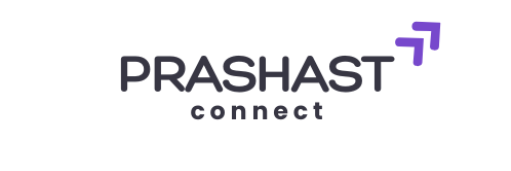ADHD in Women: Unveiling the Hidden Struggles and Empowering Solutions
Discover the often-overlooked reality of Attention-Deficit/Hyperactivity Disorder (ADHD) in women. While ADHD is commonly associated with boys, its unique presentation in women has been misunderstood for too long. This SEO-optimized guide explores how ADHD affects women differently, breaks down stereotypes, and offers actionable strategies to thrive with ADHD.
Understanding ADHD in Women: A Fresh Gender Perspective
ADHD, a neurodevelopmental disorder marked by inattention, hyperactivity, and impulsivity, doesn’t discriminate by gender—yet its diagnosis does. Studies, like one from the Journal of Clinical Psychiatry, reveal boys are diagnosed with ADHD nearly twice as often as girls. Why? Boys tend to show obvious signs like hyperactivity, while women exhibit subtler, internalized symptoms—think daydreaming, inattentiveness, or emotional ups and downs. These differences often lead to women being mislabeled as “lazy” or “overly emotional” instead of receiving an accurate ADHD diagnosis.
This gender gap in understanding ADHD leaves countless women undiagnosed, struggling silently with a condition society still views as a “male disorder.” Raising awareness about how ADHD presents in women is the first step toward closing this gap and offering much-needed support.
The Hidden Challenges of Women with ADHD
Living with ADHD as a woman comes with unique hurdles, shaped by societal expectations and gender norms. From childhood, girls are pressured to stay organized and emotionally composed—standards that clash with ADHD realities. As a result, many women mask their symptoms, overcompensating with perfectionism or relentless hard work, often at the expense of their mental health.
Research from ADHD Attention! highlights a stark truth: women with ADHD are three times more likely to face depression than their neurotypical peers. Anxiety, low self-esteem, and strained relationships often follow, as do workplace struggles with time management and organization. These silent battles underscore the urgent need for better recognition and support.
Shattering ADHD Stereotypes: It’s Not Just a Childhood Issue
Think ADHD fades after childhood? Think again. The stereotype of ADHD as a “hyperactive boy’s disorder” has left many women undiagnosed into adulthood. Symptoms evolve with age, often intensifying under the weight of adult responsibilities like careers and parenting. Recognizing ADHD in women means looking beyond hyperactivity to signs like chronic procrastination, forgetfulness, or emotional overwhelm—symptoms that don’t fit outdated diagnostic molds.
Late diagnosis is all too common, leaving women reflecting on years of unexplained struggles. As one woman told ADDitude Magazine, “My diagnosis at 35 was a relief, but it broke my heart to think of the time I lost feeling broken.” It’s time to rethink ADHD and ensure women get the help they deserve, no matter their age.
Hormones and ADHD: A Woman’s Unique Journey
Hormonal shifts set women’s ADHD experiences apart from men’s. Puberty, menstruation, pregnancy, and menopause all influence ADHD symptoms due to fluctuating estrogen and progesterone levels. For instance, many women notice heightened distractibility or irritability before their period—a phenomenon called premenstrual exacerbation. During menopause, declining estrogen can worsen memory and focus, as noted by ADHD expert Dr. Ellen Littman.
These hormonal changes make ADHD management trickier for women, often requiring tailored strategies that account for their biological cycles. Understanding this connection is key to supporting women effectively.
The Cost of Misdiagnosis and Delayed ADHD Recognition
Misdiagnosis is a major roadblock for women with ADHD. Symptoms are frequently mistaken for anxiety, depression, or even borderline personality disorder, delaying proper treatment. This misstep can trap women in a cycle of ineffective therapies and medications, draining their finances and spirits.
When diagnosis finally comes—often in adulthood—it’s bittersweet. Women gain clarity but mourn the years spent battling self-doubt. Breaking this pattern starts with educating healthcare providers to spot ADHD’s subtle signs in women.
Empowering Women with ADHD: Proven Strategies to Thrive
Women with ADHD can flourish with the right tools. Here’s how:
- Education and Awareness: Knowing how ADHD impacts you is empowering. It’s the foundation for building personalized coping strategies.
- Cognitive-Behavioral Therapy (CBT): CBT tackles negative thoughts and builds practical skills, boosting self-esteem and emotional regulation.
- Medication: Stimulants like Adderall or Ritalin can sharpen focus and curb impulsivity—consult a doctor to find the perfect fit, especially with hormonal shifts in mind.
- Organizational Tools: Apps like Todoist or Trello, paired with routines and task breakdowns, tame overwhelm and boost productivity.
- Support Networks: ADHD support groups offer validation and community, helping women feel understood.
- Self-Compassion: Embracing strengths and forgiving limitations fosters a healthier self-image.
Conclusion: Rewriting the ADHD Narrative for Women
ADHD in women demands attention—it’s a complex condition masked by stereotypes and misunderstood symptoms. By spotlighting its unique presentation, addressing hormonal influences, and advocating for accurate diagnoses, we can empower women to break free from misunderstanding. With education, support, and practical strategies, women with ADHD can transform challenges into strengths, proving their resilience knows no bounds.
Ready to learn more about ADHD in women or find support? Explore our resources and take the first step toward thriving today!


